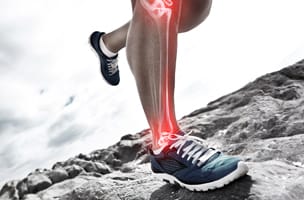Why custom orthotics and cushioned shoes don’t mix

In recent years, cushioned shoes have become a staple in the footwear industry, marketed as the ultimate solution for comfort and impact protection. At the same time, more people are turning to custom orthotics prescribed by their Melbourne Podiatrist to address foot pain, improve biomechanics, and prevent injuries. But here’s the catch: cushioned shoes and custom orthotics often don’t work well together — and combining them could actually reduce the benefits of your orthotic therapy.
Custom orthotics need a stable platform
The main purpose of a custom orthotic is to provide precise support, guiding the foot into a more optimal position during walking or running. Orthotics are designed to control motion, redistribute pressure, and correct underlying biomechanical issues such as overpronation, flat feet, or high arches. For them to work effectively, they need a stable platform — a shoe with a firm, supportive midsole that doesn’t interfere with the orthotic’s corrective function.
Cushioned shoes may cause additional problems
Highly cushioned shoes, on the other hand, are built to absorb shock and feel soft underfoot. This is achieved through thick foam midsoles, air pockets, or gel inserts, all of which introduce a level of “give” and instability. When you place a custom orthotic into such a shoe, its ability to control motion is compromised. Instead of stabilising the foot, the orthotic ends up sitting on a surface that compresses and moves with every step, reducing its effectiveness. It is akin to walking on soft sand!
This mismatch can lead to several problems. First, the therapeutic goals of the orthotic — such as correcting gait or reducing stress on certain joints — may not be met. Patients may continue to experience pain or fatigue despite wearing their orthotics consistently. Second, the extra cushioning can cause the foot to sink unevenly, potentially creating new pressure points or throwing off alignment. Over time, this could even lead to overuse injuries, particularly in the knees, hips, or lower back.
Let the custom orthotic do its job
If you’ve invested in custom orthotics from one of our Melbourne podiatrists then choosing the right footwear is crucial. Our podiatrists recommend shoes with a firm, supportive midsole, a removable insole, and a stable heel counter. These features provide a solid foundation, allowing the orthotic to do its job (providing optimal foot function) as intended. While these shoes may feel less “plush” compared to maximalist running shoes, they offer the right environment for long-term foot health and pain relief.
Prioritise function over comfort for pain relief
Cushioning isn’t inherently bad — it can be beneficial for people without biomechanical issues or those who simply want extra shock absorption. But for anyone investing in custom orthotics, the priority should be function over softness. The right shoe-orthotic combination, guided by Melbourne Podiatrists & Orthotics can make the difference between ongoing pain and lasting relief.

Do you wear custom orthotics?
At our Melbourne foot clinic our podiatrists are experts in custom orthotic therapy and can advise on the best orthotic-shoe combination.
So if you wear custom orthotics and you haven’t had them recently checked, book an appointment with one of our friendly podiatrists today!


